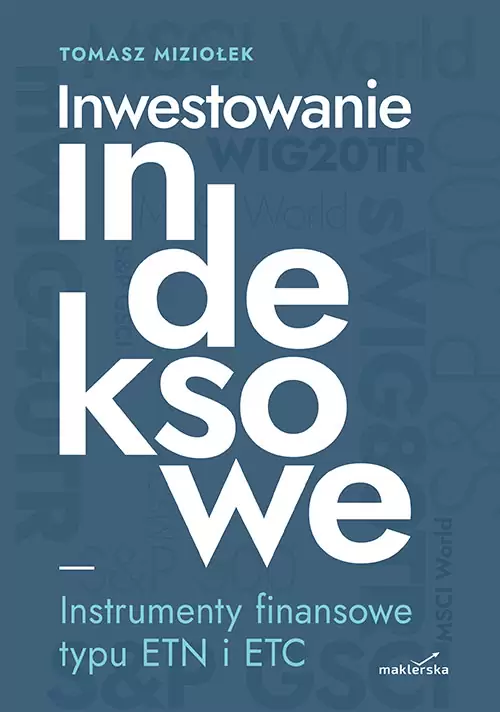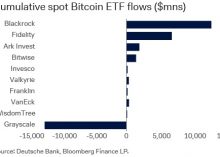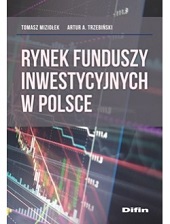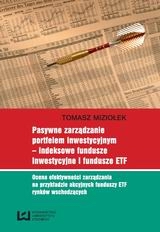Artykuł Francisa Grovesa na temat europejskich funduszy ETF z ekspozycją na rosyjski rynek akcji
Russian ETFs: Variations But No True Variety
There are now nine or so European-domiciled ETFs tracking Russian indices but there’s no escaping that their most prominent common denominator is the concentration in energy stocks and, to a lesser extent basic materials producers. The weighting of these two sectors ranges from 70% in the case of db x-trackers MSCI Russia Capped 25% (XMRC:GR) to no less than 96% in that of Lyxor ETF RusIndex Titans 10 (RUS:FP), the largest of these ETFs with over euro 1.2 billion in assets under management (AuM).
The differences between the indices that these ETFs track are essentially a matter of different stock capping regimes and, in particular, the effect that they have on the weighting of the mighty Gazprom. Stock capping limits range from the MSCI Russia Capped 30% index (tracked by iShares and Comstage ETFs) down to the 10% limit in the RBS Market Access DAXGlobal Russian ETF (M9SJ:GR).
These index stock capping regimes don’t appear to make much difference to energy sector weightings; caps on Gazprom and Lukoil simply allow for higher weightings for somewhat smaller oil and gas companies such as Surgutneftegas. However, the recent increase in oil prices hasn’t necessarily meant that energy sector weighting has grown even greater. For XMRC, for instance, the energy and materials component was 80% in August 2009 but is now down to about 70%. Other Russian sectors, such as financials, utilities and telecoms are benefiting from the oil boom.
Without doubt, the ETF model works well for investors in a case like Russia where some hands-on investment initiatives, notably Hermitage Capital Management but also BP’s relationship with TNK-BP (and now Rosneft) have come to grief. Investing in Russian funds not only spreads the risk but also has another distinct advantage. There seem to be two elements to this; firstly, Russian ETFs are investing in what one could safely characterise as more or less ‘safer investments’, ones that won’t be destroyed by political entanglements, but, secondly, whatever the Russian government may say, they favour the kind of investing without (boardroom) power that ETFs exemplify.
Although all nine Russian ETFs are UCITS lll compliant, for the time being it looks as if nearly all the interest in Russian ETFs is coming from institutional rather than private investors. Given the probable safety of the kinds of company tracked by Russian ETFs (from a legal point of view – though the prospectuses of Russian ETFs are strong on their political risk), there is some scope for more private investor interest for those that are happy to have more eggs in the energy basket.
Given the concentration of Russian ETFs on the energy sector, BRIC funds may have something to offer, not because the BRIC concept offers a truly coherent theme but for precisely the opposite reason; Russia’s overdependence on its energy industry is balanced by the manufacturing industries of China and India’s IT services industry.
Similarly, iShares MSCI Eastern Europe 10/40 ETF (IDEE:LN) offers an energy weighting of 40% even though Russian companies comprise 68% of the ETF by market capitalisation. It’s interesting to note that Neptune Investment’s actively managed Russia and Greater Russia fund had an energy weighting of a mere 25% at the end of 2010. Meanwhile, Russia’s own MICEX index has an energy weighting of 52%; the index is based on free float adjusted market capitalisation and, like the RusIndex Titans 10, has a 15% cap.
Russia stock markets’ own indices continue to be untracked by European ETFs. Instead, the indices covered here so far comprise American and global depositary receipts (ADRs and GDRs) listed on non-Russian exchanges such as New York and London. Last summer saw the advent of the first Russian ETF tracking a Russian index, the Troika Dialog Index RTS Standard (RSTRS:RU). Though small in terms of AuM, this genuine Russian exchange tracker appears to have fairly robust liquidity, both at the level of the ETF’s own shares and, as the constituents are very large companies, at that level, too.
Where Russian ETF development will continue to be thwarted, though, is in their diversification in terms of sectors and constituents’ size. ETFs don’t normally foster entrepreneurship by themselves so other trends need to fall into place to enable Russian ETFs to diversify further. Although President Medvedev seemed to be floating the idea of inward investment funds at Davos in January, it was noteworthy that the blue print seemed to be outward bound sovereign wealth funds such as Norway’s – suggesting a kind of sovereign control of foreign investment. As the Russian state has giant stakes in some of the country’s largest concerns, there is scope for ETFs as a kind of privatisation vehicle (with Russian citizens at the front of the queue for subscriptions). Of course, the Russian government would probably want to keep golden shares to prevent foreign ownership being achieved by means of share redemptions. But this and the recent removal of capital gains tax on direct investments in non-listed companies don’t mean that a Russian mid-cap or small-cap ETF will appear imminently.
Holdings: iShares MSCI Russia Capped 10/40
Francis Groves is a researcher and writer on investment topics, based near London, England. His most recent book, 'Exchange Traded Funds, A Concise Guide To ETFs’ was recently published by UK Publisher, Harriman House. This guide covers the essentials of investing with ETFs for financial advisers and serious private investors. Visit http://www.harriman-house.com/exchangetradedfunds to find out more.Artykuł został przygotowany specjalnie dla serwisu www.etf.com.pl.






Wpis jeszcze nie ma komentarzy.